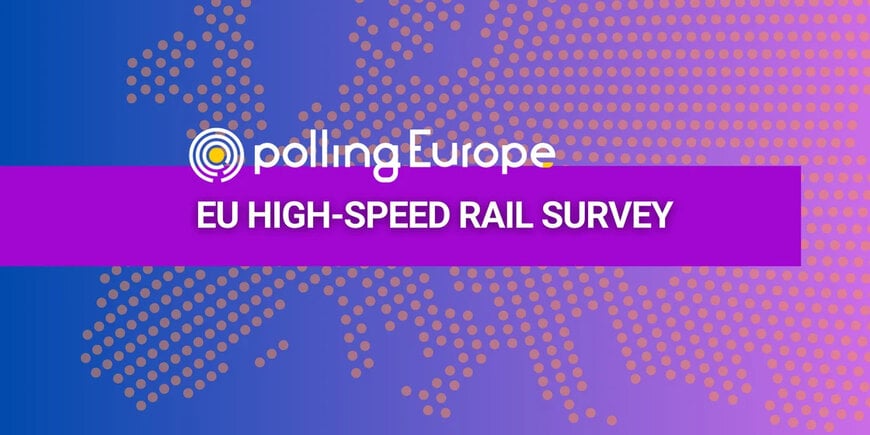EU survey reveals large majority of citizens would swap planes for high-speed trains to travel in Europe
A recent EU survey shows that a large majority of European citizens would like to travel faster and more easily between European countries, preferring to travel by high-speed rail instead of flying.
www.cer.be

Commissioned by the Community of European Railway and Infrastructure Companies (CER) and carried out by Polling Europe, this new European perception survey comes at a key moment, as the European Commission prepares to launch a plan, requested by President Ursula von der Leyen, for a European High-Speed Rail Network connecting all EU capitals and major cities.
Over five thousand interviews were conducted across Europe as part of the survey to understand EU citizens' perceptions of transport connections between European countries, their likelihood of travelling by high-speed rail within Europe, and their views on transport infrastructure investments:
. When asked about their perception of current transport options, only 1 out of 10 EU citizens consider transport connections between EU countries to be adequate. 83% of citizens surveyed believe there is room for improvement, with 49% stating that transport connections must be improved to make travel significantly faster and easier.
. Regarding the perception of high-speed rail in Europe, 3 in 4 EU citizens would take a high-speed train instead of a plane when travelling across Europe for short and medium distances if there were fast and reliable high-speed rail connections between European capitals and major urban areas.
. Talking about European transport investment, 79% of citizens agree that Europe should invest more in high-speed rail to make it easier to travel between European countries.
The EU transport perception survey shows that Europeans are eager for more travel options to move quickly and conveniently between EU countries. It also shows that support is widespread and that citizens see the advantages of high-speed rail, both in countries already served by high-speed lines, such as France or Spain, and in countries where they are not yet available.
The European High-Speed Rail Network, currently under discussion at the European Commission, could span 49,400 km and connect all EU capitals and major urban areas of more than 250,000 inhabitants. With speeds varying from over 350km/h on new lines to 200 km/h on upgraded lines, travel times between connected cities could be significantly shortened making rail the fastest option for distances up to 1,000 km. A European study estimates the cost of the network at €546 billion, a considerable investment fostering regional development, economic integration and enhanced connectivity across broad geographical areas.
CER Executive Director Alberto Mazzola said: "This perception survey on high-speed rail shows that citizens are ready to shift to sustainable and efficient transport options. Advocated by former Prime Minister Enrico Letta, endorsed by former Prime Minister Mario Draghi, and pushed forward by European Commission President Ursula von der Leyen, political momentum in support of high speed rail development has been growing. We now need the European Union to align with citizens' expectations by proposing an ambitious action plan for a High-Speed Rail Network encompassing all EU capitals and major urban areas for a better connected future. "
About the survey
The interviews were conducted by Polling Europe between 16 and 25 May 2025, on a representative sample of 5,107 adults aged 18 and over across the 27 EU Member States. Sampling was proportionally distributed according to national populations, age and gender quotas were applied in each country based on the latest Eurostat data to ensure demographic representativeness.
www.cer.be

